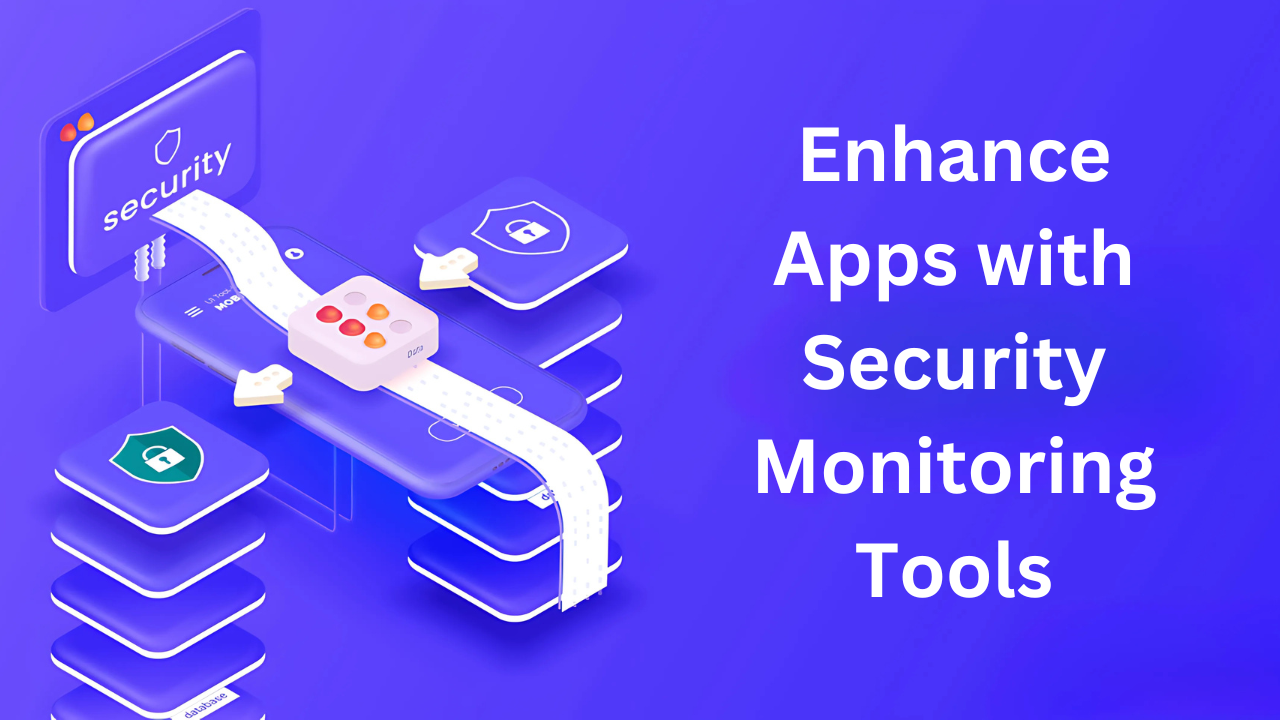
Introduction
Applications remain top targets in the current digital landscape which demands businesses to focus on security as their leading priority. Organizations must create strong security measures for their applications because cyberattacks along with data breaches and compliance needs continue to increase. Application security monitoring plays its most important function at this point. The continuous monitoring of security threats and vulnerabilities alongside suspicious activities through business applications allows businesses to protect their applications during normal operations. The performance of applications stays intact by security monitoring tools which also decrease downtimes while building user trust.
What Is Application Security Monitoring?
Application security monitoring persists in processing continuous threat observation alongside security threat analysis and risk response procedures. Security monitoring tools identify vulnerabilities and detect unauthorized access attempts together with malware injections and other security threats as they happen in real time. Security threats can be prevented together with data breach occurrences through effective proactive threat management which meets all security regulations.
Key Functions of Security Monitoring Tools:
-
Threat Detection – The threat detection functionality helps detect malware together with suspicious activities and hacking attempts.
-
Vulnerability Scanning –Detects security loopholes and weaknesses in the code.
-
Incident Response – The tool notifies IT personnel about security breaches and initiates pre-set response protocols.
-
Compliance Management – Ensures adherence to industry security standards like GDPR, HIPAA, and PCI-DSS.
Benefits of Security Monitoring for Apps
1. Real-Time Threat Prevention
Security monitoring tools adopt constant threat scanning to prevent unauthorized access while also blocking data leaks and malware attacks through real-time action protocols.
2. Improved Application Performance
Applications tend to become slower and lead to system crashes when attackers launch their cyber attacks. Businesses who monitor security threats will preserve their performance levels while providing users with uninterrupted operation.
3. Better User Trust and Experience
Users tend to trust applications which give security the highest priority. User Experience Management becomes stronger when security interruptions and data breaches do not interfere with applications that maintain smooth performance.
4. Compliance with Security Standards
A large number of businesses must follow specific security compliance requirements. Security monitoring tools enable organizations to fulfill their security requirements both for maintaining safe applications and fulfilling audit standards.
Best Practices for Enhancing Apps with Security Monitoring Tools
1. Implement Automated Security Scanning
Security scanning tools operated by technology enable organizations to spot security vulnerabilities before they evolve into serious threats. Application security stays protected against novel and developing dangers through scheduled scanning routines.
2. Monitor User Behavior and Access Logs
A system for tracking user behavior enables the identification of unusual activities that could possibly indicate unauthorized login attempts or unexpected data access patterns. Through access logs administrators can identify possible security hazards.
3. Use AI-Powered Threat Detection
AI together with machine learning technology helps application security monitoring through predictive analysis of patterns for early threat identification. Security solutions that run through AI analytics enable the detection of anomalies as well as potential breaches in large data sets.
4. Conduct Regular Security Audits
Businesses achieve better security assessment through regular scheduled security audit checks. Periodic evaluations through penetration testing help organizations create applications which resist cyber intrusions.
5. Encrypt Sensitive Data
The protection of sensitive user information becomes stronger through data encryption because it defends data during breaches. The implementation of encryption protection should cover both stored information and moving data across the system.
6. Enable Multi-Factor Authentication (MFA)
MFA provides security enhancement through the necessary use of multiple authentication factors to allow access. Security measures through encryption prevent unauthorized access even when login details are compromised.
7. Integrate Security Monitoring with DevOps (DevSecOps)
Security needs to become fundamental for designing processes from the beginning. Through its integration with DevOps (DevSecOps), businesses can track down vulnerabilities while fixing them before production begins.
Choosing the Right Security Monitoring Tools
1. Real-Time Threat Detection
The selection of a security tool must consist of real-time threat detection and immediate alert capabilities for security alerts.
2. Scalability
A security monitoring system should provide scalability which allows it to meet both application expansion and security risk evolution requirements.
3. Integration Capabilities
The chosen security tool must present easy integration capabilities regarding current security solutions together with firewalls and application monitors.
4. Compliance Support
Assess the tool’s capacity to sustain compliance standards because this will ensure data protection and business image security.
The Role of Security Monitoring in User Experience
Security development directly influences the user experience delivered to customers. Applied security delivers a smooth trustworthy experience for application users. User Experience Management achieves benefits through security monitoring tools by protecting users from security risks and phishing scams and application outages due to cyberattacks. The combination of fast application speed with security measures creates positive effects on customer satisfaction and engagement and customer retention levels.
Conclusion
Enhancing applications with security monitoring tools is essential for preventing cyber threats, ensuring compliance, and maintaining user trust. With application security monitoring, businesses can detect vulnerabilities, prevent unauthorized access, and optimize app performance. Additionally, integrating security measures into User Experience Management ensures a seamless and secure app experience for users. By implementing security best practices and choosing the right tools, businesses can safeguard their applications while delivering a high-quality user experience.